Today we will talk about weeds, how to remove them from summer cottages and gardens and what harm they cause.
- What harm do weeds cause to cultivated plants?
- Folk remedies.
- Weed killers
- How to sow a garden to prevent weeds from growing
- What to do to prevent grass from growing between the beds.
|
This is how we fight weeds |
Weeds are the main enemy of any garden plot.In the garden they compete with cultivated plants for food and moisture. It is from them that diseases and pests “come” to our vegetables. But not everyone succeeds in destroying the weeds on their site... The most difficult to eradicate weeds are rhizomatous (creeping wheatgrass) and root shoots (field sow thistle, common sow thistle).
Why are they dangerous for the garden, vegetable garden, and sometimes for humans?
Damage caused by weeds to cultivated plants
First of all, weeds are extremely prolific; many of them produce tens of thousands of seeds in one season, which have a very high germination potential, thereby abundantly replenishing their “reserves” in the soil.
For example, the woodlice, known to all gardeners, is a lover of wet areas. In 40 days it manages to sprout, bloom and produce just a huge amount of seeds. Over the summer, it can fill the entire garden.
The seeds of many weeds have a fairly dense shell. Many sprout after lying in the ground for several years, so destroying weeds on a site is extremely difficult.
With each loosening, we inflict mechanical wounds on such seeds, accelerating their germination. That is why, after weeding, weed seeds quickly germinate and form a solid wall.
In spring, weeds sprout and grow much earlier than cultivated plants. Therefore, they greatly inhibit the sowing of early vegetable crops, thereby causing great harm to cultivated plants.
Weeds have a much more powerful root system.Therefore, they are the first in the garden to absorb water and nutrients dissolved in it, taking them away from cultivated plants, depleting and drying out the soil, and this again causes harm to the plants that we grow with such difficulty.
For many perennial herbs, when weeding an area, pieces of underground organs remain in the ground, which quickly take root and new plants grow from them. Also, daughter roots grow from the main root, and from them, in turn, new plants sprout.
In addition, some weeds (for example, creeping wheatgrass) release toxic substances into the soil, which significantly accelerate the process of soil fatigue.
They are also a favorable habitat for many pests. For example, cruciferous flea beetles and cabbage butterflies find shelter on weeds of the cruciferous family, and the Colorado potato beetle on nightshade crops. The wireworm's favorite habitat is thickets of creeping wheatgrass, and soil nematodes like to reproduce on field thistle.
And finally, weeds are “adapted” to colonize new territories. Their seeds are carried by wind and melt water, birds and animals. A clear example is the soft bristles of young grass that appear shortly after the application of fresh cattle manure. I think that any summer resident, based on his own experience, knows what harm weeds cause to cultivated plants and how much time and effort it takes to destroy them.
How to get rid of weeds using folk remedies
How to fight an “invincible” enemy? There are several rules that were “discovered” by our ancestors. There is nothing complicated or new about them. We know them well, but for some reason we often don’t adhere to them.
- Weeds must be actively controlled before they grow.Even the largest area can be easily cleared of small grass. The later we do this work, the more effort will be required to destroy them. The most accessible and easiest way is spring harrowing, which is carried out as soon as the soil is “ripe.” On many crops with deep seeding, harrowing can be done almost before germination. When sowing crops whose seeds do not germinate for a long time, the rows are marked with pegs or a lighthouse crop (lettuce, radish) is sown. And on heavily weeded beds, you can start inter-row cultivation “blindly” - before the crop emerges when weeds appear.
- Cut weeds with a flat cutter or sharp hoe. This should be done in sunny weather so that the weeds dry out immediately in the sun. Cut down in rainy weather, many manage to take root again.
- It is necessary to cut off the growth point, which is located at a depth of 1-2 cm. Therefore, the hoe should go slightly deeper into the ground, and not chop only the tops of the grass. Even such a “dangerous” weed as wheatgrass, if every 4-5 days for 6-7 weeks to remove its growth point, i.e. depriving it of sun at all, without disturbing the roots, will die from exhaustion: it needs sunlight for development and growth.
- It is necessary to fight grass not only in spring and summer, but also in autumn. Unfortunately, summer residents often struggle with weeds all spring and summer; by autumn there are fewer of them and gardeners calm down, forgetting that the remaining specimens can produce a lot of seeds and will have to be fought just as actively next season. Therefore, in the fall, weeds must be destroyed with special care. be careful not to allow them to form seeds. The most insidious times are considered to be wet September and October, when we often stop fighting weeds.
Mulch against weeds
Mulching beds is a very useful technique for many reasons. Mulch also prevents weeds from breaking through, but the layer must be at least 5 cm. This is perhaps the most useful, effective and absolutely free way to get rid of grass in garden beds.
Using black film
Instead of mulch, you can cover the bed with black film. Not a single weed will get through it, and small holes are made in the film for planting plants. Most often, this method is used when planting strawberries.
Killing weeds with vinegar
You can also destroy the grass with ordinary table vinegar. Vinegar must be added to the water so that the concentration is at least 15 - 20%. Such a mixture can burn everything it touches, not just weeds, so processing must be carried out purposefully. This is a safe method for people and can be used near cultivated plants.
If there is little vinegar and the required concentration cannot be achieved, you can add salt to the water with vinegar. The result will be an even more deadly solution, but it is better to use it outside the garden or on paths, away from the beds.
Use of ammonium nitrate
It turns out that saltpeter is used not only as a fertilizer, but also to control grass. Of course, you will have to make the concentration just lethal, dissolve three kilograms of saltpeter in a bucket of water and start processing.
This is also a completely safe method for humans, the saltpeter will quickly erode into the atmosphere in the form of ammonia, and not much working fluid is required, just to moisten the leaves.
Weed killers
We destroy grass using herbicides video:
Well, if you are distrustful of the experience of your ancestors, and at the same time of the hand cultivator and flat cutter, then the stores have a fairly large selection of chemicals to combat this scourge.
Continuous action herbicides. Only a few herbicides are approved for use on private farms. Continuous herbicides commonly used are Roundup and Tornado. They are capable of destroying almost all weeds - perennial and annual, including sow thistle, creeping wheatgrass, plantain, chamomile, and knotweed. field bindweed, and others.
Moreover, they destroy all plants, including berry bushes. trees, flowers. They can destroy even large trees if the drug gets on the leaves when sprayed.
Therefore, when using continuous herbicides, it is necessary to strictly follow the instructions, protect the garden and vegetable garden with film, cardboard, and ensure that the solution does not get on crop plants. If this does happen, be sure to wash the solution off the cultivated plants with water. Make sure that the wind does not blow the herbicide to neighboring areas.
The active substances contained in herbicides can penetrate through the leaves into all parts of the plant. As a result, growth points will be damaged and the above-ground and underground parts of the plants will die completely.
Initially, the leaves on the treated plants turn yellow, then turn brown and dry out. After two to three weeks, complete death occurs.
Selective herbicides. Of the selective herbicides on country lawns, it is allowed to use Lontrel-300, which, without affecting cereal lawn grasses, will destroy dandelion, sow thistle, plantain and other weeds.
Before using the herbicide, be sure to carefully read the instructions included with the product.
But, in my opinion, the use of herbicides in garden plots to control weeds is a last resort that can be resorted to when developing a new plot. And in a well-established garden, a sharp flat cutter (or, in extreme cases, a hoe) in the hands of a gardener will prevent wheatgrass and sow thistles from descending.
How to sow a plot to prevent weeds from growing.
We sow green manure so that weeds do not grow video:
If you are not going to plant your plot (or part of the plot) with cultivated plants during the summer, then plant green manure there. This will not only destroy annoying weeds, but also enrich and structure the soil.
Mustard. Mustard is a cold-resistant crop, it can be sown as early as April, the seed sowing rate is per 1 sq. meter 5 - 6 gr. Scatter the seeds on the ground and cover them with a rake, then be sure to water. Mustard grows very quickly and with such dense sowing there is simply no room left for weeds. During the summer, mustard must be mowed several times to prevent it from blooming. The following year, plant remains are embedded in the soil.
Rye. To prevent grass from growing on the plot, it can be sown with rye. Rye is usually sown in areas freed up after harvesting, for example after harvesting potatoes. This green manure not only destroys weeds, but also disinfects and fertilizes the soil. In the spring, it is also embedded into the soil using a shovel or walk-behind tractor.
In addition to rye and mustard, peas, oilseed radish, and lupine are sown in garden plots; they also grow strongly and suppress almost all types of weeds. Read more about the use of green manure in the article: “You’ve been imprisoned, but what next?”
What to do to prevent weeds from growing between the beds
To prevent weeds from growing between the beds, it is best to mulch the passages with sawdust, mown grass or wood chips. You can now buy a shredder for all kinds of garden waste in stores. There is always a lot of such garbage, including branches cut from trees, last year's raspberry shoots, etc. With the help of such a shredder, you can not only fill the passages between the beds, but also make paths in the garden from wood chips.
Some gardeners cut and cover the passages between the beds with old rugs and cardboard boxes. Even the passages between the rows of raspberries are lined with cardboard and raspberry shoots cannot break through it.
To destroy weeds between the beds, you cannot use chemicals, otherwise there is a risk of poisoning the cultivated plants.
Instructive video about weed control:
You might be interested in:
- Let's make French beds at our dachas
- Beautiful pond in the garden
- I want a dacha, but I'm too lazy to work
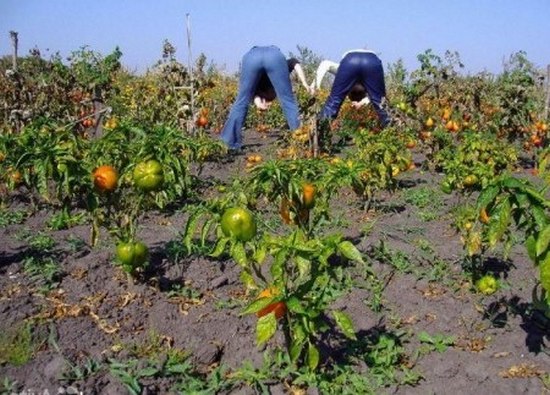
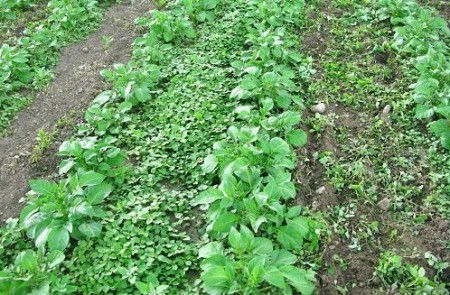
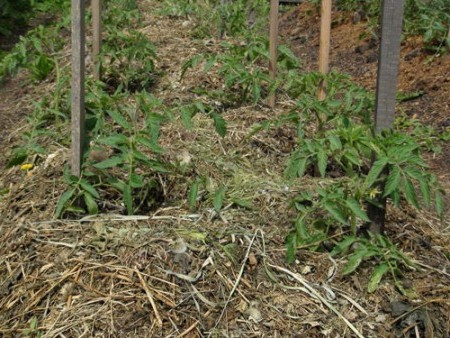
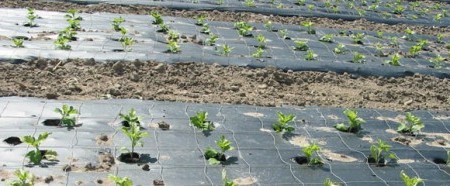
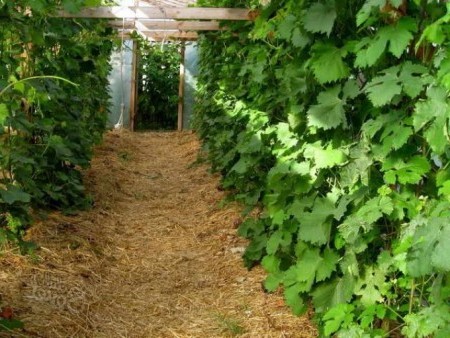

 (9 ratings, average: 4,11 out of 5)
(9 ratings, average: 4,11 out of 5) CUCUMBERS NEVER GET SICK, I'VE BEEN USING ONLY THIS FOR 40 YEARS! I SHARE A SECRET WITH YOU, CUCUMBERS ARE LIKE THE PICTURE!
CUCUMBERS NEVER GET SICK, I'VE BEEN USING ONLY THIS FOR 40 YEARS! I SHARE A SECRET WITH YOU, CUCUMBERS ARE LIKE THE PICTURE! You can dig a bucket of potatoes from each bush. Do you think these are fairy tales? Watch the video
You can dig a bucket of potatoes from each bush. Do you think these are fairy tales? Watch the video
 How our fellow gardeners work in Korea.There is a lot to learn and just fun to watch.
How our fellow gardeners work in Korea.There is a lot to learn and just fun to watch. Eye trainer. The author claims that with daily viewing, vision is restored. They don't charge money for views.
Eye trainer. The author claims that with daily viewing, vision is restored. They don't charge money for views. A 3-ingredient cake recipe in 30 minutes is better than Napoleon. Simple and very tasty.
A 3-ingredient cake recipe in 30 minutes is better than Napoleon. Simple and very tasty. Therapeutic exercises for cervical osteochondrosis. A complete set of exercises.
Therapeutic exercises for cervical osteochondrosis. A complete set of exercises. Which indoor plants match your zodiac sign?
Which indoor plants match your zodiac sign? What about them? Excursion to German dachas.
What about them? Excursion to German dachas.
Hello! Boil a few eggs in water. Some people find that leftover water from boiling eggs kills weeds faster than plain water. Pour water over the weeds immediately after removing the eggs from it.
Lots of factual errors, contradictions, funny advice. The author has little understanding of the topic or has made a thoughtless rewrite of similar articles.
The most convenient and productive tool in weed control is the Fokina flat cutter. They can remove weeds several times faster than with a conventional hoe.
Kuzya, knocking down weeds with a shovel, especially if you cut off its sharp nose and sharpen it, is several times faster than with a pruner.It's actually quite hard physically.